Abstract
Reconstruction of amputated fingertips is extremely challenging when the amputee is very small and severely crushed. Moreover, there are not many options if distal phalanx is exposed due to defects of soft tissue. We report a case of successful fingertip reconstruction in a 10-month-old girl using a subcutaneous island flap with a composite graft. Her fingertip of the right little finger was amputated stuck by the air purifier. Some soft tissue was lost from the stump and the bone was exposed. There was a very small amputee, and soft tissue was extremely little inside. Replantation was not possible because of the soft tissue defect. The composite graft was inadequate due to the exposure of distal phalanx and defect of soft tissue. Soft tissue island flap based terminal branch of the digital artery was transposed to cover the distal phalanx. After then, the amputee was grafted over the flap. After debridement, most of the soft tissue survived and 0.2×0.2 cm of skin defect was found, which was healed through secondary intention.
Go to : 
Reconstruction of amputated fingertips for the infant is extremely challenging when the amputee is very small and severely crushed [1]. Replantation or composite graft is inadequate when there are defects of soft tissue. Stump revision or free flap can be another option, but it is not easy to guarantee the success of free flap in infants due to the small caliber of the vessel [2]. Composite grafting of amputee may be an alternative option [3], but it does not promise the survival of the graft. In addition, the composite graft cannot survive if bones are exposed due to additional soft tissue defect. However, until now, there has been no reported case of performing composite graft simultaneously with subcutaneous island flap. Herein, we report a successful case of fingertip reconstruction with subcutaneous island flap and composite graft.
Go to : 
A 10-month-old girl presented with amputation of a fingertip in right little finger stuck by an air purifier. Radiographically, fracture was not observed, but distal phalanx was exposed at stump (Fig. 1). The amputee was very small, and very little amount of soft tissue was included. In addition, there was a soft tissue defect between the amputee and the stump, and distal phalanx was exposed. Replantation was not possible because of a small and crushed amputee. It was hard to ensure success of composite graft due to soft tissue defect and bone exposure. To cover the exposed bone, subcutaneous island flap based on distal transverse palmar arch (DTPA), which becomes island flap pattern with comparatively longer pedicle, was elevated. The thickness of the flap was approximately 1 mm on average, and it was raised on the subcutaneous plane. The flap was transposed onto the exposed distal phalanx (Figs. 2, 3). Circulation of the flap was checked by bleeding in the subcutaneous fat. Then, a composite graft was performed over the flap with the amputee (Fig. 4). Due to concerns about the circulation of subcutaneous flap, the composite graft was simply sutured at the wound margin. All surgical procedures were performed under loupe magnification. Debridement was done 4 weeks after the surgery. Most of the soft tissue survived and 0.2×0.2 cm (0.04 cm2) of skin defect was found on the fingertip, which was healed through secondary intention. Afterward, there was no palpable protruding bone on the fingertip, and the infant was able to do normal activities (Fig. 5). There was no difference in the volume of the distal finger pulp between the operated finger and the contralateral side.
Written informed consent was obtained for publication of this case report and accompanying images.
Go to : 
Injuries to the fingertip occur very commonly due to trauma. In the meantime, the amputation of the finger also occurs frequently. Amputation of the fingertip occurs much more frequently than other proximal amputation [4]. Various treatments for fingertip amputation have been introduced. Nonsurgical treatment or direct revision of the stump can be done, but it causes serious functional and cosmetic problems [5]. The composite graft can be an option. Since the first good results were reported by Douglas [6], it has been widely used in fingertip injuries. However, the engraftment rate of composite graft is low on exposed bone due to the poor vascularity of the bed [7]. Microsurgical replantation can preserve finger length and produce the best results cosmetically or functionally [8]. However, if the amputee is very small and severely crushed, and especially in the case of infant, the small caliber of the vessel makes surgery extremely difficult.
Previous studies revealed that the two palmar digital arteries join at the lunula level and form the DTPA [9]. From the DTPA, central arteries are branched [10]. Considering the characteristics of an arch, it is possible to maintain circulations on both sides when the flap is made by cutting the arch. In the cut arch, artery with comparatively longer pedicle can form a subcutaneous island flap. With careful dissection following the pedicle, U-shaped subcutaneous island flap can be elevated (Fig. 6). Since this subcutaneous island flap does not contain skin, it is impossible to know if the circulation of flaps is maintained through the skin. However, through surgical microscope, it is possible to find whether microbleeding occurs in the fat tissue contained in the subcutaneous island flap. Bleeding from the fat tissue can ensure the circulation of the flap. This subcutaneous island flap can be transposed onto the exposed distal phalanx for coverage. After the flap is sutured over the exposed distal phalanx, the circulation of the flap may decrease due to tension. It could be checked again by microbleeding on the flap. Then, the amputee can be grafted over the subcutaneous island flap as a composite graft. Since the distal portion of the flap will have a relatively lower circulation, partial skin defects can occur on the fingertip. But it can be healed through secondary intention, and larger can be healed through skin grafting.
This subcutaneous island flap is worth considering in that it can prevent bone exposure through internal flaps regardless of whether or not the composite graft is successful. If replantation is difficult and composite graft is not indicated, subcutaneous island flap to cover the bone and doing composite graft over the flap is a possible alternative treatment option.
Go to : 
REFERENCES
1. Kusuhara H, Ichinohashi K, Sueyoshi Y, Tabata Y, Isogai N. Reconstruction of severely crushed fingertip amputations with basic fibroblast growth factor slow release system. Plast Reconstr Surg Glob Open. 2017; 5:e1384.

3. Alper N, Sood A, Granick MS. Composite graft repair for distal fingertip amputation. Eplasty. 2013; 13:ic32.
4. Venkatramani H, Sabapathy SR. Fingertip replantation: technical considerations and outcome analysis of 24 consecutive fingertip replantations. Indian J Plast Surg. 2011; 44:237–45.

5. Wang K, Sears ED, Shauver MJ, Chung KC. A systematic review of outcomes of revision amputation treatment for fingertip amputations. Hand (N Y). 2013; 8:139–45.

6. Douglas B. Successful replacement of completely avulsed portions of fingers as composite grafts. Plast Reconstr Surg Transplant Bull. 1959; 23:213–25.

7. Son D, Chu H, Yeo H, Kim J, Han K. Finger tip composite grafting managed with moist-exposed dressing. J Korean Soc Surg Hand. 2012; 17:9–15.
8. Ryu DH, Roh SY, Kim JS, Lee DC, Lee KJ. Multiple venous anastomoses decrease the need for intensive postoperative management in tamai zone I replantations. Arch Plast Surg. 2018; 45:58–61.

Go to : 




 PDF
PDF Citation
Citation Print
Print



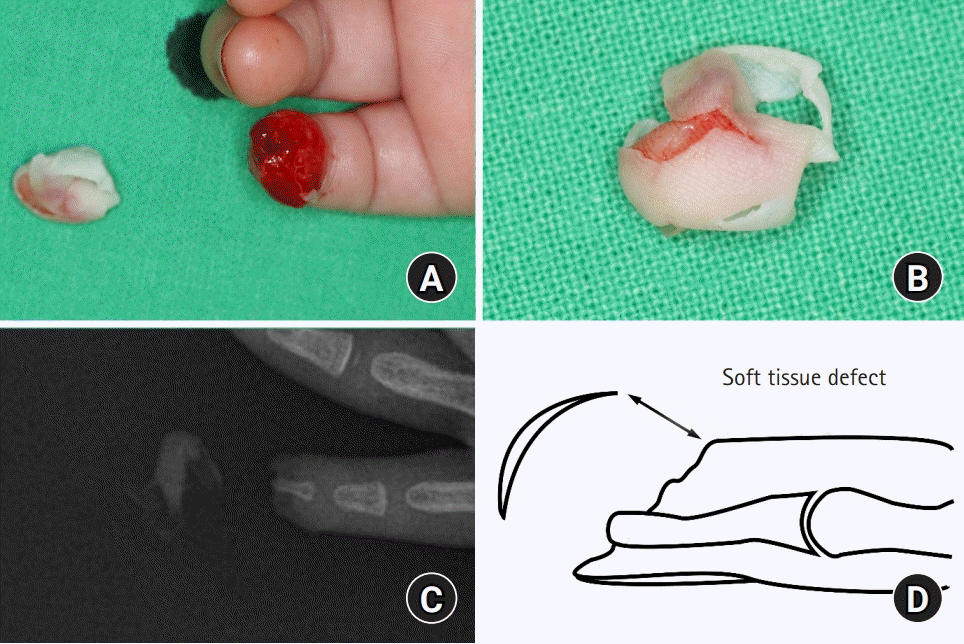

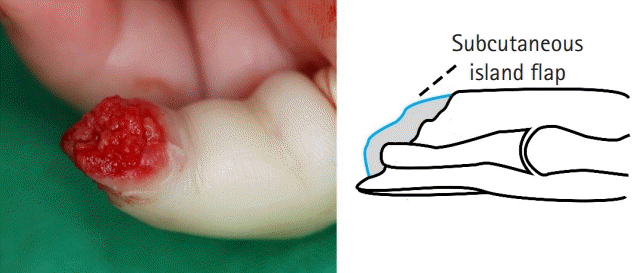
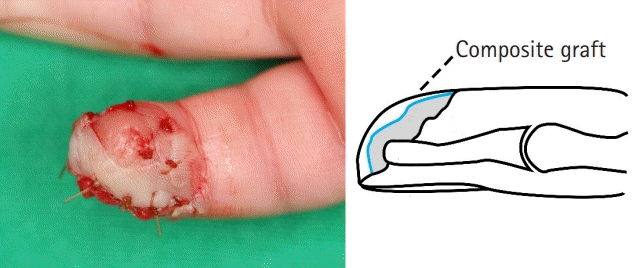
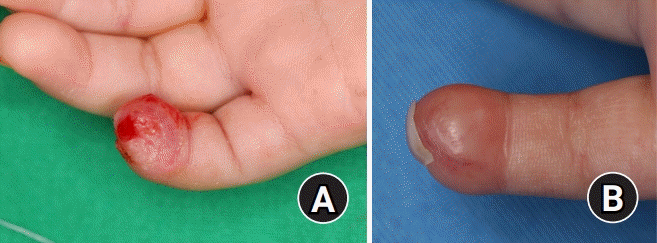
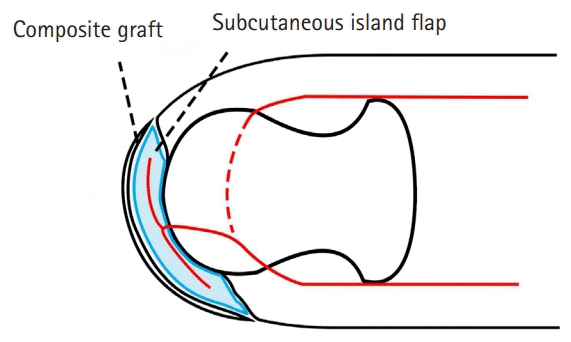
 XML Download
XML Download